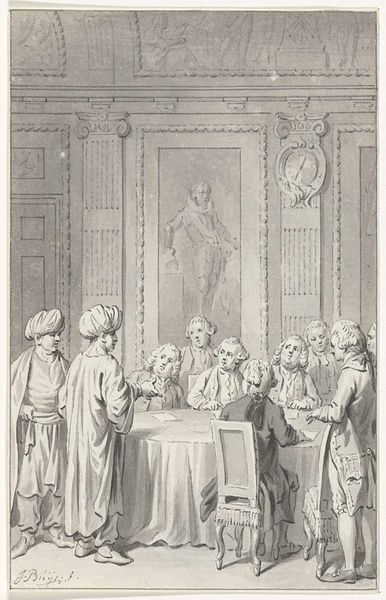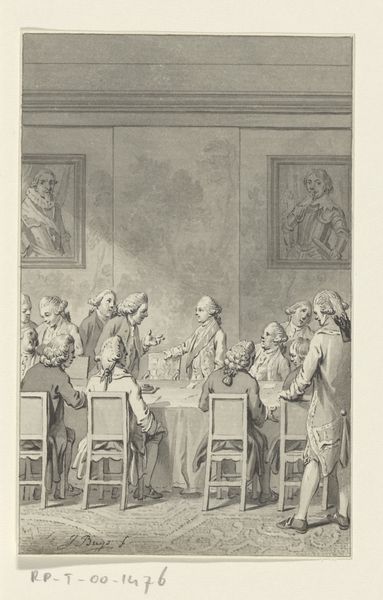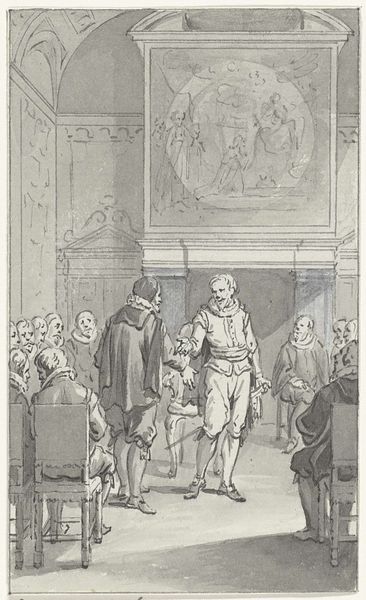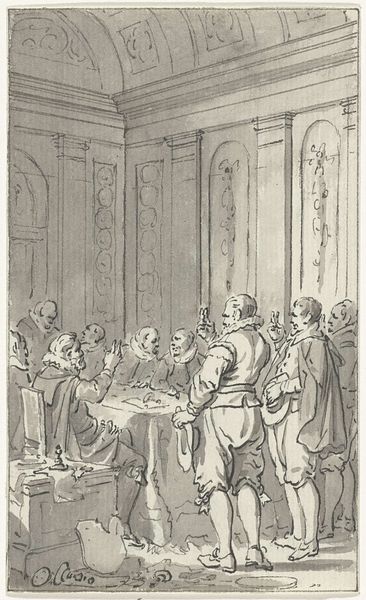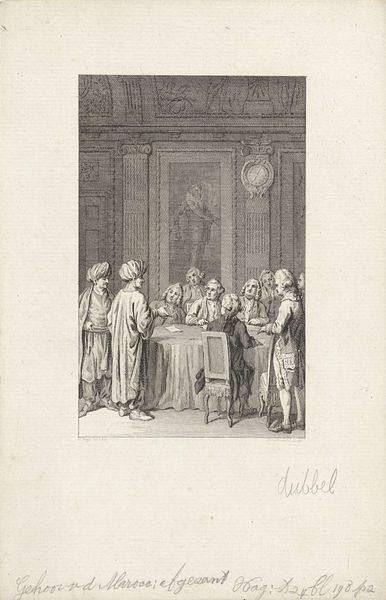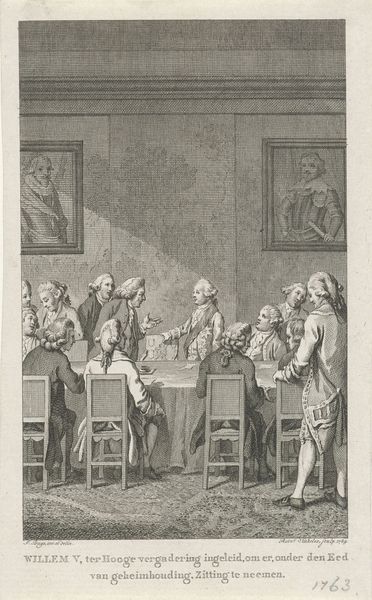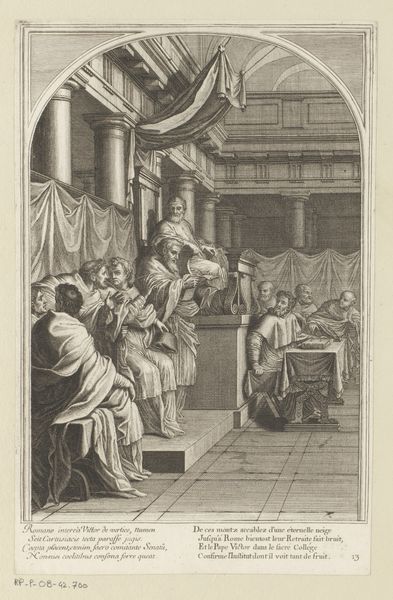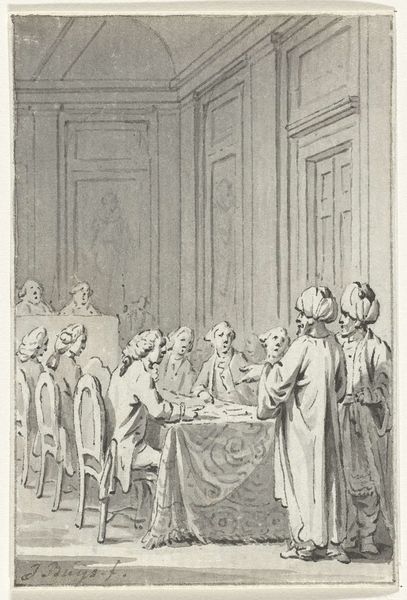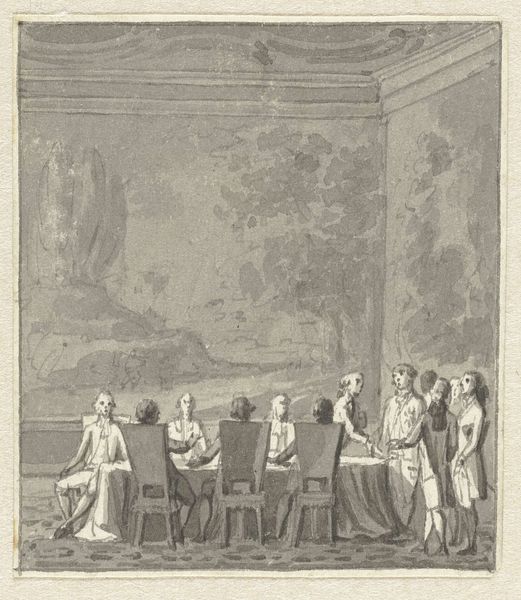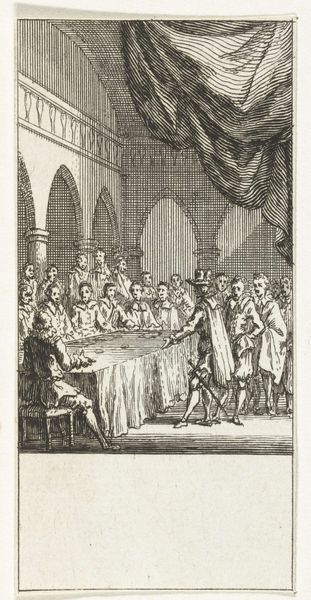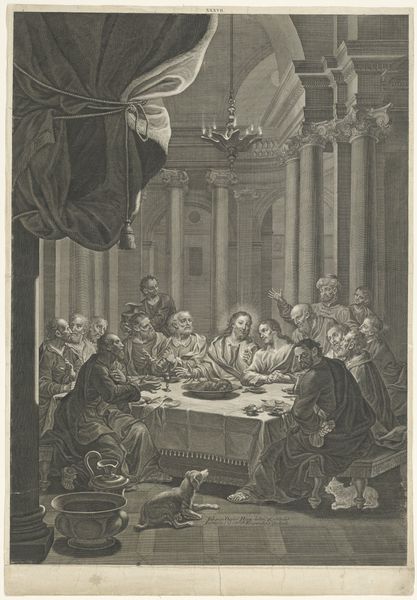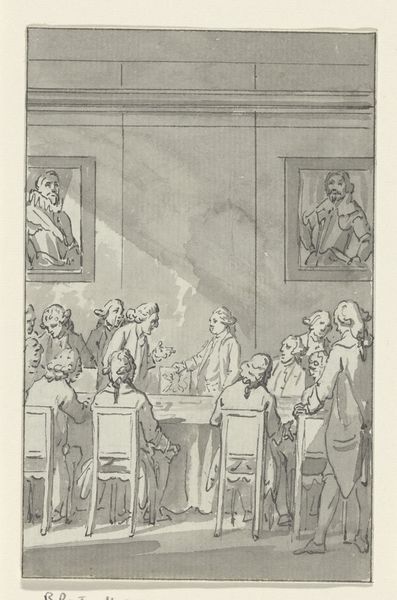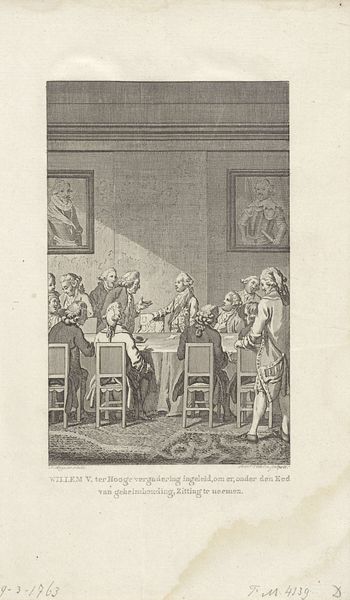
Ontvangst van de Marrokaanse gezant door de Staten Generaal, 6 september 1770 1770 - 1801
0:00
0:00
jacobusbuys
Rijksmuseum
Dimensions: height 143 mm, width 91 mm
Copyright: Rijks Museum: Open Domain
Curator: Well, this is Jacobus Buys' "Reception of the Moroccan Envoy by the States General, 6 September 1770." It's rendered in pen and ink, dating from 1770 to 1801. Editor: It has a rather… muted elegance, doesn't it? The limited palette lends a certain seriousness to the scene, though the delicate lines add a touch of lightness. Curator: It’s interesting, isn’t it, to consider how such an event would be depicted. Here we have the States General receiving a Moroccan envoy; an event brimming with diplomatic significance, but presented almost… clinically. Editor: The composition, though, feels a bit off. All those wigs create an almost humorous, repetitive rhythm. Is it a statement about uniformity, or simply the style of the era overwhelming the individual? Curator: It's certainly a product of its time, the Rococo period. Yet, there’s an inherent tension. The event itself—the meeting of cultures, the negotiations, the power dynamics—that is a significant political act depicted with a reserved Dutch sensibility. It feels like a balancing act between spectacle and sober governance. Editor: True. The architecture dwarfs the figures, further emphasizing that contrast. And that rather elaborate clock on the wall. Time, perhaps, ticking away the complexities of the negotiations? Or is it suggesting this scene could be repeated indefinitely? Curator: Maybe both. What strikes me is the positioning of the Moroccan envoy. He stands somewhat apart, but also centrally, indicating his importance yet his foreignness. The drawing acts almost like a historical record but softened by artistic choices that are evocative in nature. Editor: And it does leave us with so many questions: What were the terms of the agreement? What impressions did each side make? Was Jacobus Buys aiming for mere accurate representation or a more nuanced perspective? The sparseness compels you to engage more actively. Curator: Absolutely. This drawing invites a dialogue. Not just about the past, but about how we represent power, diplomacy, and cultural exchange today. The reception hall and the negotiations are a stage of early modern international relations. Editor: A stage indeed—framed here by these spare, elegant lines, open for our own interpretations. It seems there is much beyond the reception being received by those gathered here today.
Comments
No comments
Be the first to comment and join the conversation on the ultimate creative platform.
